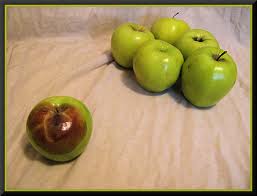 Most of last week I spent time in Milwaukee with friends of mine from the Boys & Girls Club movement. I spoke to executive directors, board volunteers, fundraising professionals and program staff. Since I just opened the doors to my new consulting practice — The Healthy Non-Profit LLC — this was my first ever conference as an exhibitor. I found it very interesting that many of the conversations I entered into started with the words: “Erik, I have a problem that I need your help with . . .”
Most of last week I spent time in Milwaukee with friends of mine from the Boys & Girls Club movement. I spoke to executive directors, board volunteers, fundraising professionals and program staff. Since I just opened the doors to my new consulting practice — The Healthy Non-Profit LLC — this was my first ever conference as an exhibitor. I found it very interesting that many of the conversations I entered into started with the words: “Erik, I have a problem that I need your help with . . .”
After taking a few days to digest the conference and all the people I spoke with, I’ve come to this very simple and disturbing conclusion:
Y’all need to stop trying to be cowboys!
As I revisit those conversations, they sounded something like this:
- My revenue budget looks grim for next year. What should I do?
- Our board members only want to cut their way out of this budget crisis. What should I do?
- My donor database is a mess. What should I do?
- The board of directors is disengaged and expects me fix everything. What should I do?
 As I think back to those conversations, I realize that there was one song that ran through my head (kinda like background music on an elevator) and it was this song by Bonnie Tyler. Of course, if you just clicked that YouTube link, then you’re probably laughing because I just accidentally cast myself in the role of Shrek. ROTFLMAO!
As I think back to those conversations, I realize that there was one song that ran through my head (kinda like background music on an elevator) and it was this song by Bonnie Tyler. Of course, if you just clicked that YouTube link, then you’re probably laughing because I just accidentally cast myself in the role of Shrek. ROTFLMAO!
As someone who is new to consulting, these conversations are very encouraging because they validate my business plan. However, truth be told, this isn’t what I am actually thinking about today . . . I keep circling back to the idea that my non-profit friends need to stop trying to solve these problems alone. You are not a cowboy! You are not Superman!
While you might think I am trying to turn this blog post into a “case for support” for hiring a consultant or coach, please believe me when I say I am not. In fact, I believe almost everyone I spoke to at the conference currently has the resources to solve their problems if they just engaged their volunteers, donors and community leaders in an open and honest dialog about whatever ails them.
 I live in the Chicago area of the country, and this week is “Chicago Ideas Week“. In this event’s own words this week-long event includes 100 speakers in 7 days that will result in ONE inspired city. “Chicago Ideas Week (CIW) will bring the world’s top speakers together with Chicago’s best thinkers to create an ecosystem of innovation, exploration, and intellectual recreation.” Click here to visit their website and learn more.
I live in the Chicago area of the country, and this week is “Chicago Ideas Week“. In this event’s own words this week-long event includes 100 speakers in 7 days that will result in ONE inspired city. “Chicago Ideas Week (CIW) will bring the world’s top speakers together with Chicago’s best thinkers to create an ecosystem of innovation, exploration, and intellectual recreation.” Click here to visit their website and learn more.
So, here is my crazy idea . . . why not leverage the collective talent and genius of your non-profit supporters and community much like the City of Chicago is trying to do?
I can see it now. A room full of donors and supporters hearing board volunteers and staff honestly talk about the “state of your non-profit organization”. After hearing an update on a particular subject matter (e.g. program outcomes, board development, fundraising, etc), a question is posed to the audience. Participants break into smaller work groups to brainstorm. After a sufficient amount of time, these sub-groups report back, notes are taken, and solutions are generated. Before leaving this ideas conference, donors/volunteers/supporters are invited to help implement the solutions they just generated (but they are asked to only volunteer for what they feel passionate about working on).
Am I crazy to think that we need to let our defenses down and find ways to engage all stakeholders in solving our agency’s challenges?
Please use the comment box located below to weigh-in with your thoughts. What would stop you from doing something like this? Why not engage supporters in brainstorming and rolling up their sleeves to help you? Are there any take-aways from the Chicago Ideas Week concept that you think you might be able to use at your non-profit organization?
We can all learn from each other. Don’t be shy. Please share your thoughts below. And if you don’t know where to start in organizing an event like this, please give me a call because I’d love to help!
Here is to your health!
Erik Anderson
Founder & President, The Healthy Non-Profit LLC
www.thehealthynonprofit.com
erik@thehealthynonprofit.com
http://twitter.com/#!/eanderson847
http://www.facebook.com/eanderson847|
http://www.linkedin.com/in/erikanderson847





